- Popular Post
-
Posts
1,600 -
Joined
-
Last visited
-
Days Won
30
Content Type
Profiles
Calendar
Forums
Posts posted by 13Mirch
-
-
- Popular Post
- Popular Post
3 hours ago, Singh123456777 said:But did he not come back to akal thakat to accept his tankah? So your point is unvalid.
If baba thakur singh ji said that baba santa singh ji was a sant then i take his word for it
How long did it take him to do that though? It was only when he saw an opportunity to promote himself at the expense of the Badals that he crawled to the Takhat. Nangs continually harp the anti-SGPC/Akali line, yet their great jathedar crawled to these very same institutes for forgiveness.
5 -
- Popular Post
- Popular Post
2 hours ago, Neeliyanfaujan96 said:Some nihangs in the chakarvarti dal who are constantly on the move around in Punjab have dedicated their life for the seva of others. When I was in the dal, they said that people are always tied under their family problems, and having a family would make it harder for them as their wife cannot come into the chakaravrti dal while she’s pregnant as it would be too hard for her to move every three days, therefore they remain unmarried so they can freely do their seva without any problems.
Kaurs back in the day, then, must have hidden in holes in the grounds? The Gurus, too, must have been tied under their family problems. The only ones not tied down, it seems, then must be all these nangs you mention and obese-al-qaum Santa.
4 -
- Popular Post
- Popular Post
1 hour ago, Neeliyanfaujan96 said:Some nihangs in the chakarvarti dal who are constantly on the move around in Punjab have dedicated their life for the seva of others. When I was in the dal, they said that people are always tied under their family problems, and having a family would make it harder for them as their wife cannot come into the chakaravrti dal while she’s pregnant as it would be too hard for her to move every three days, therefore they remain unmarried so they can freely do their seva without any problems.
What seva? Killing each other? Bending over for the GOI? Attacking fellow Sikhs? Ripping off amateur wannabes in the UK? Soliciting with prostitutes whilst claiming Sarbloh Bibek?
4 -
- Popular Post
- Popular Post
45 minutes ago, Singh123456777 said:The path of the nihang is kashatri way. They are ready for dharam yudh. The jathedar’s family is the fauj and they have to give up their old lifestyle to become it.
Familial neglection? Don't see much difference between the nangs and ascetics then.
3 -
- Popular Post
- Popular Post
31 minutes ago, Singh123456777 said:And they gave up their ghristi life. You cannot be a ghristi to be jathedar of budha dal.
Did they? Or is this another nang myth like obese-e-qaum Santa defended the panth in '84 and didn't bend over for Indra.
5 -
- Popular Post
- Popular Post
10 hours ago, monatosingh said:Balbir is married to a mona, people who cut their hair.
Those past Gursikhs didn't.
Don't digress from the topic at hand. I asked him as to why past Jathedars married and why these modern day Nangs refuse to marry outright. Not picking on only Balbiro Nang, but also Jogindra and Prema as well.
6 -
- Popular Post
- Popular Post
On 3/28/2018 at 8:31 PM, Singh123456777 said:It also says that whoever is jathedar of budha dal that they have to be unmarried, but balbir is married to a wife who cuts her hair. So he just broke that maryada and nullified his position of jathedari
Not to rain on your parade, but Baba Binod Singh was married; Nawab Kapur Singh was married; Baba Jassa Singh Ji was married- how do these modern day nangs, you mention, compare to those past Gursikhs then?
8 -
Why did the Sarbatt Khalsa 2015 fail? Because we had no identified issues to resolve; no viable leadership alternatives; no progressive plans outlined and above all we elected sampradaic thugs to lead us. Who called this Sarbatt Khalsa? The UAD of the infamous Simranjeet Singh Maan, a second-rate politician, and the more rebellious elements of the Sant-Samaj who wished to sit on higher chairs than their superiors. Let us take examples, from the Sikh past, as to why Sarbatt Khalsas were held and what their outcomes were:
1.) Bhai Mani Singh Ji, with the concurrence of other elected Sikh leaders, called a Sarbatt Khalsa to resolve the Tat-Bandai conflict. The Bandais military strength was decimated and the Mughals also forced to retreat for the time. This Sarbatt Khalsa addressed as to who was the Guru Ad perpetum, the Guru Granth Sahib Ji or Banda Singh Bahadur.
2.) The next Sarbatt Khalsa divided the Sikhs into 5 Jathas, all 200 strong, to bolster the Panth's depleted military strength. These Jathas consisted of the younger Sikhs, Bhujangis, and were led by veteran Nihangs such as Baba Dip Singh Ji.
3.) A Sarbatt Khalsa was then held in the jungles of Punjab to debate the Mughals' offer of governorship to the Sikhs. Five Sikhs were elected by the assembled Sikhs to debate the pros and cons of the offer and present them to the Sangat. The Sarbatt Khalsa ended with a re-definition of governorship i.e.
-The governor would have a council of five Sikhs who would continually advise him on matters affecting the Sangat.
-The governor would be bound to the dictums of the Sangat and not vice versa.
-The governor would retain the prerogative to elect his own successor but only if the sangat ratified his course of action.
3.) Kapur Singh, the elected governor, would commune the next Sarbatt Khalsa. In this, he would demarcate the Sikhs into two blocs- the Budha Dal and Tarna Dal.
Each and every one of these Sarbatt Khalsas, and successive assemblies, would follow the same course:
1.) The assembly would be declared, Sikhs would collate.
2.) All who collated, would then elect a body to debate upon and identify the most crucial matters facing the Panth.
3.) A body of intellectuals and leaders, in both social and military competencies, would then be elected to decide which course of action to take in whichever crucial matters they were mandated to resolve.
In the 2015 Sarbatt Khalsa what we had was:
1.) All issues were identified prior by UAD and the Samaj. The Sangat was involved nowhere.
2.) A body was already elected, prior, to the event itself which had formed it's own opinions and preconceived notions.
3.) Intellectuals and the more honest leaders (including some sell-outs desiring to fool the sangat) were nowhere present.
4.) And lastly, but most importantly, all the crucial issues worth debating were absent. What were these issues?
A.) In post-colonial India, why are the Sikhs facing socio-political persecution whenever they desire to express sentiments of self-determination?
B.) The beadbi at Bargari has historically been witnessed in post-independence Punjab as well. What are the hidden motives behind such acts?
C.) As institutes of the Panth, our Jathas and SGPC are fast deteriorating. What can be done to either restore their pristine states or amputate them from the greater body politic?
D.) How can the supremacy of the Akal-Takhat be re-established? How can it be ensured that the institute is taken out of the hands of politicians and instead put in the hands of the Panth?
E.) Jathedari, as conceived by the SGPC and Deras, is greatly varied from what it was historically. Is this new current of leadership viable or should we revert to the historic model?
F.) Is Western democracy and secular administration conducive for the Khalsa Panth? If so then how to bring it in consort with Panthic political norms? If not, then is it high time that we ignore parliamentary procedures and form our own?
G.) How can Punjab, the Sikh homeland, be saved from it's present regressive state? How can the border issues; the assets issues and the waters issues be resolved satisfactorily? If not, then what policy is the Panth to adopt?
H.) How can Sikhs, globally, be brought under one single platform?
I.) How can impartial Sikh leaders be identified and/or trained for the future?
J.) How can Sikhi be spread globally?
What we had instead was this:
1.) A prisoner is our Jathedar whilst his proxy retains true power.
2.) Sampradaic thugs, with proven track records of treachery, are our Jathedars.
3.) A regurgitation of penalizing KPS Gill and Brar.
4.) Go home everyone, end of show.
1 -
- Popular Post
- Popular Post
21 hours ago, Prokharkoo84 said:bro i aint having a dig at nihangs, it breaks me to know that the pehredhaar of the kaum have now been reduced to a joke or going on large hyping over meat but not ready for any form of action. regards to others wearing bana but constantly slandering other jathebandis are just has bad, all these divisions in the panth i doubt are even out of sharda for Sikhi, its all self hype and trying to be bigger and better than each other. Until we truly bow our heads in shame in front of Guru Ji then we gona continue to suffer how we are
My grandfather was general secretary of the Doaba Kisan Union when Giani Zail Singh inaugurated the Guru Gobind Singh Ji Marg. During those days Zail Singh was playing fiddle to both Santa Singh of Budha-Dal and the neo-Nirankaris. Only a few days prior, Nirankari gangs had set upon an amritdhari Singh and burned him with acid. The Union took up his case and approached Zail Singh who outright refused to interfere in the matter asserting that Gurbachan Nirankari was a Sant and Sants could not be publicly arraigned and/or criticized. The Union next approached Santa Singh who was, then, based at Bathinda and preparing for his journey to Anandpur Sahib. It informed him that not only were Nirankaris publicly desecrating Gurbani but also attacking Sikhs. Santa Singh, laughed them off, saying that Zail Singh was a hans (pure as swan) and if he believed Gurbachna to be divine then even he-Santa Singh- was ready to conform to the latter. The other Nihang Dals, however, contributed money towards the victim's kin all the while grumbling against Santa Singh's ludicrous rhetoric.
3 -
14 minutes ago, TheeTurbanator said:
Which part do you want me to source?
If your talking about Randhir Singhs translation, its already in the link I shared, if you havent read it, then here it is again: http://www.searchsikhism.com/islam-in-gurbani
As for Bhagat Kebeer, its so obvious that he is a Sikh when you take his bani into account. Even if he and other Bhagats were around before Guru Nanak was physical born, they can still be Sikhs of the Guru, the ONE Guru (there is only one Guru as per Gurbani).Shabad, shabad is the true Guru.
1 -
1 hour ago, Kira said:
The translations most sikhs are on a whole completely misleading. They're far too Western-centric as a result core principles are totally lost within them.
Yogi Harbhajan, in a bid to further his cult, had the self-proclaimed sophist Sant Singh translate Gurbani. Sant Singh, himself, admitted he was not up to the task but nonetheless continued under Yogi's guidance.
https://tisarpanthdotcom.wordpress.com/2017/10/29/a-matter-of-translation/
0 -
37 minutes ago, InderjitS said:
On the subject of Des Pardes and after the professional hit on Purewal due to his refusal to stop publishing weekly pictures of shaheeds and reporting on the atrocities, did the police brush it under the carpet?
Care to elaborate further?
0 -
-
2 minutes ago, MisterrSingh said:
It's not just Indians who play these games, sometimes it's our own people and others, such as the British and Americans, who've been conditioned to believe these lies. They point to the United Nations hearing when Manmohan Singh was directly asked whether India had purposefully targeted Sikhs for elimination during the 80's and 90's, and his reply in the negative apparently settles all arguments, because "one of our own" categorically denied such a thing took place, therefore it must be true(!).
When going toe to toe with such people for whom facts and truths can conveniently assume many forms dependent on the time of the day, lol, you've got to be prepared with as many direct and easily identifiable comparisons that they simply cannot refute. The Nazi and Jew collaboration angle is perhaps one of the most suitable, because of the West's continued obsession with Hitler and his regime. It's a language they understand, because it's the only one they speak. Same with the previously identified Obama example. "Did racism suddenly evaporate in the United States when the Obamas made the White House their home?" Too many are all too eager to defend that which should never be defended for their own vested interests. The facts are alien to such people. Ideology and politics are the only things that matter to these people. The only weapon that's effective in such moments is the truth.
Speaking of which:
They also have some of Santa Singh Nihang bowing to Rajiv Gandhi- will try finding those as well.
1 -
20 hours ago, MisterrSingh said:
This is the kind of activism that works in this day and age. Now expect various Indian sympathisers - or paid agents - in the western press to inexplicably push a few anti-Sikh stories into the foreground to counter any potential good this work might do.
There's one line that's trotted out whenever there's a conversation of India's mistreatment of Sikhs, and it's, "If India was anti-Sikh, why was a Sikh elected as Prime Minister?" It's a completely reductive argument that conveniently bypasses countless instances in history where a few select ambitious individuals (who lack any wider sense of affinity for the plight of their brethren) from within a "troublesome" minority community are purposefully selected and elevated to key positions in the majority's administration in order to muddy the waters and give the impression to outsiders that there is no systemic discrimination. There were Jews in Germany who collaborated with the Nazis for business reasons and for their own selfish purposes, and that's arguably the most concise and striking example to offer someone who's peddling Indian propaganda about Manmohan Singh. This is before we even get into the argument of the turban not signifying religious adherence, as much as being white doesn't denote a devotion for Christianity.
For Indians to be pushing this line of reasoning is hypocritical. Pick up any text book on the so-called British Atrocities and you will see that at least several chapters are entitled to demeaning traitors who acquired prominence with the white man by betraying the black.
2 -
La Noche Triste
Pav Singh’s 1984: India’s Guilty Secret and the continuing Sikh night of sorrows.

Is catastrophe a precursor to genocide or is genocide a spontaneous outburst of violence- essentially a riot? The misnomer of riot to veil genocide is nowhere more evident than in the Indian state’s treatment of the anti-Sikh pogroms of November 1984. Whereas the political-cum-social discourse of the majority community has condensed the event into the misbranded Delhi Riots, for the survivors they were a well-executed genocide. It is axiomatic that justice delayed is justice denied; Pav Singh in his 1984: India’s Guilty Secrethowever goes a step further- on the basis of the survivors’ accounts which he recounts lucidly- Singh contends that November was by no means a riot. It was the culmination of a long drawn out plan to inflict such wounds on the Sikh psyche that the community would never again agitate for civil rights in the Indian union, and assimilate into the greater neo-Hindu political fold (Hindutva). Radical, in scope, 1984 has swiftly dethroned existing analyses of that apocalyptic November and portends change in the global perception of genocide.
1984, from the onset, does not exercise restraint. It is vivid in it’s recounting of the horrors which the Sikhs faced in the aftermath of Prime Minister Indra Gandhi’s assassination. Whereas the mass rapes of Sikh girls and women have often been downplayed in the works of Khushwant Singh and Nayer, Pav Singh elects to focus on how it was employed as a tool to humiliate Sikh males before they were doused in kerosene and set on fire. His almost calm narration of events is enough to render even the most staunch of readers chilled. A fourteen year old boy is forced to witness the gang-rape of his mother; a whole family is hurled out of their residence to witness their daughters being stripped nude, urinated upon and then raped by hordes of mourners (as consecutive political accounts would refer to the culprits). Sikh males are set alight whereas groups of Sikh women are rounded up and held outside Delhi in a semi-concentration camp where they are continually violated. The myth that only Sikh males were targeted is effortlessly effaced by Pav Singh who dedicates an entire chapter to the sexual atrocities suffered by Sikh women. The attitude of doctors, police, and general society towards the victims of rape are also scrutinized. Elements of all three would be instrumental in evicting victims from aid camps and returning them to their prior locii which, in most cases, would be in ruins. The fortunate would escape; the unfortunate would once again fall into the hands of their violators.
Another complex facet, of the November pogroms, which has hitherto been obscured is what happened to the Sikh policemen and military personnel in Delhi? 1984 unabashedly substantiates, based on official documentation, how all Sikh serving personnel in Delhi were ordered to take leave in the early hours of November 1st ’84. Most would have had no idea, other than that Indra Gandhi had been gunned down by her Sikh bodyguard duo the night before, of the inferno which awaited them outside their official precincts. Weaponless, they would have walked straight into effective death traps. Military personnel, serving or otherwise, would have fallen prey to armed mobs on the nation’s railway network. Were Sikhs only targeted at train stops? Pav Singh systematically exposes this canard, again relying on official documentation, to evidence that at least forty-six unauthorized train stops were made which allowed assembled mobs to slay all Sikhs on board.
For Sikhs, the primacy of Pav Singh’s work hinges on three crucial factors:
1.) It effectively refutes the misnomer of riot.
2.) Whilst paying tribute to the few brave souls who risked life and limb to save Sikhs, it also depicts the callousness of politicians, police and neighbors who betrayed the Sikhs by rendering them defenseless in the face of bloodthirsty mobs.
3.) It refutes the theory of Delhi Riots. Detailed maps provide evidence of sanguinary pogroms executed in Gujrat, Uttar Pradesh, Maharashtra, Tamil Nadu, Assam, West Bengal and Agartala.
Candid, impenitent and critical- Pav Singh’s 1984 is radical in it’s approach to the November pogroms. Though sections of the Indian media are criticizing Singh, his work should be judged with impartiality; India’s Guilty Secret not only recounts the atrocities inflicted on the Sikhs, but also exposes the political/social cohesion via which the events of November ’84 transpired. The theory of Nanak Jayanti, an alleged rumor which posits that the pogroms were intended for execution on the birth celebrations of Guru Nanak Dev Ji (founder of the Sikh faith) for maximum damage, is also analyzed by Singh. Victim statements are taken into account which depict the conditions outside Punjab in the aftermath of the ill-construed Operation Bluestar. Sikh businesses and residences were often transcribed with a S symbol in the lead-up to November; on the night of 31st October teams were employed to scour several cities in a mission to place this S on all Sikh locations. On the 1st of November the grim significance of this symbol would become transparent as mobs marched on all such identified locations. Nanak Jayanti, caught out by Gandhi’s demise, had been implemented earlier to teach the troublesome Sikhs a bloody lesson.
What of the judiciary and the aftermath? Singh, in a brief list, provides an exposition of all the failed commissions which attempted to tackle November ’84 but failed to provide even token justice for the victims. He ends on a poignant note; the survivors of ’84, forgotten by all, are shown as suffering from the trauma of the atrocities inflicted upon them. The state is continually failing in it’s mandate to provide them justice; the social discourse veils their trauma whereas the same ideology which preyed upon them is today gaining ground nationwide. Justice delayed is justice denied, justice denied is justice perverted.
https://tisarpanthdotcom.wordpress.com/2018/02/25/la-noche-triste/
0 -
- Popular Post
- Popular Post
La Noche Triste
Pav Singh’s 1984: India’s Guilty Secret and the continuing Sikh night of sorrows.

Is catastrophe a precursor to genocide or is genocide a spontaneous outburst of violence- essentially a riot? The misnomer of riot to veil genocide is nowhere more evident than in the Indian state’s treatment of the anti-Sikh pogroms of November 1984. Whereas the political-cum-social discourse of the majority community has condensed the event into the misbranded Delhi Riots, for the survivors they were a well-executed genocide. It is axiomatic that justice delayed is justice denied; Pav Singh in his 1984: India’s Guilty Secrethowever goes a step further- on the basis of the survivors’ accounts which he recounts lucidly- Singh contends that November was by no means a riot. It was the culmination of a long drawn out plan to inflict such wounds on the Sikh psyche that the community would never again agitate for civil rights in the Indian union, and assimilate into the greater neo-Hindu political fold (Hindutva). Radical, in scope, 1984 has swiftly dethroned existing analyses of that apocalyptic November and portends change in the global perception of genocide.
1984, from the onset, does not exercise restraint. It is vivid in it’s recounting of the horrors which the Sikhs faced in the aftermath of Prime Minister Indra Gandhi’s assassination. Whereas the mass rapes of Sikh girls and women have often been downplayed in the works of Khushwant Singh and Nayer, Pav Singh elects to focus on how it was employed as a tool to humiliate Sikh males before they were doused in kerosene and set on fire. His almost calm narration of events is enough to render even the most staunch of readers chilled. A fourteen year old boy is forced to witness the gang-rape of his mother; a whole family is hurled out of their residence to witness their daughters being stripped nude, urinated upon and then raped by hordes of mourners (as consecutive political accounts would refer to the culprits). Sikh males are set alight whereas groups of Sikh women are rounded up and held outside Delhi in a semi-concentration camp where they are continually violated. The myth that only Sikh males were targeted is effortlessly effaced by Pav Singh who dedicates an entire chapter to the sexual atrocities suffered by Sikh women. The attitude of doctors, police, and general society towards the victims of rape are also scrutinized. Elements of all three would be instrumental in evicting victims from aid camps and returning them to their prior locii which, in most cases, would be in ruins. The fortunate would escape; the unfortunate would once again fall into the hands of their violators.
Another complex facet, of the November pogroms, which has hitherto been obscured is what happened to the Sikh policemen and military personnel in Delhi? 1984 unabashedly substantiates, based on official documentation, how all Sikh serving personnel in Delhi were ordered to take leave in the early hours of November 1st ’84. Most would have had no idea, other than that Indra Gandhi had been gunned down by her Sikh bodyguard duo the night before, of the inferno which awaited them outside their official precincts. Weaponless, they would have walked straight into effective death traps. Military personnel, serving or otherwise, would have fallen prey to armed mobs on the nation’s railway network. Were Sikhs only targeted at train stops? Pav Singh systematically exposes this canard, again relying on official documentation, to evidence that at least forty-six unauthorized train stops were made which allowed assembled mobs to slay all Sikhs on board.
For Sikhs, the primacy of Pav Singh’s work hinges on three crucial factors:
1.) It effectively refutes the misnomer of riot.
2.) Whilst paying tribute to the few brave souls who risked life and limb to save Sikhs, it also depicts the callousness of politicians, police and neighbors who betrayed the Sikhs by rendering them defenseless in the face of bloodthirsty mobs.
3.) It refutes the theory of Delhi Riots. Detailed maps provide evidence of sanguinary pogroms executed in Gujrat, Uttar Pradesh, Maharashtra, Tamil Nadu, Assam, West Bengal and Agartala.
Candid, impenitent and critical- Pav Singh’s 1984 is radical in it’s approach to the November pogroms. Though sections of the Indian media are criticizing Singh, his work should be judged with impartiality; India’s Guilty Secret not only recounts the atrocities inflicted on the Sikhs, but also exposes the political/social cohesion via which the events of November ’84 transpired. The theory of Nanak Jayanti, an alleged rumor which posits that the pogroms were intended for execution on the birth celebrations of Guru Nanak Dev Ji (founder of the Sikh faith) for maximum damage, is also analyzed by Singh. Victim statements are taken into account which depict the conditions outside Punjab in the aftermath of the ill-construed Operation Bluestar. Sikh businesses and residences were often transcribed with a S symbol in the lead-up to November; on the night of 31st October teams were employed to scour several cities in a mission to place this S on all Sikh locations. On the 1st of November the grim significance of this symbol would become transparent as mobs marched on all such identified locations. Nanak Jayanti, caught out by Gandhi’s demise, had been implemented earlier to teach the troublesome Sikhs a bloody lesson.
What of the judiciary and the aftermath? Singh, in a brief list, provides an exposition of all the failed commissions which attempted to tackle November ’84 but failed to provide even token justice for the victims. He ends on a poignant note; the survivors of ’84, forgotten by all, are shown as suffering from the trauma of the atrocities inflicted upon them. The state is continually failing in it’s mandate to provide them justice; the social discourse veils their trauma whereas the same ideology which preyed upon them is today gaining ground nationwide. Justice delayed is justice denied, justice denied is justice perverted.
https://tisarpanthdotcom.wordpress.com/2018/02/25/la-noche-triste/
3 -
4 hours ago, S4NGH said:
Haha ? spot on. Reminded me of my nana. He went to a rally which indira attended. The kisaans complained about the mandi prices of chillies amongst other thing. indira reportedly said "if red chillies sell for more, grow red chillies only". The crowd wet themselves laughing at her foolishness. Of course green chillies ripen and then become red; there is no 'red chilli' seed. Nana returned home early commenting "ਸ਼ੋਕਰੀਜਾਵੀ ਨੂ ਪੋਰਾ ਅਕਲ ਨੀ".
http://5abspectrum.com/?p=2097
Ala Singh's kutti baans.
1 -
19 hours ago, sikhni777 said:
Especially at the moment that they are being seduced by some random girl...
Blame the victim, never the bomb.
0 -
- Popular Post
- Popular Post
9 hours ago, Sukhvirk1976 said:I would be very happy to volunteer
God help us all.
4 -
14 hours ago, MisterrSingh said:
If we used the same tactics of mocking them by using their religious terminology and ways, they'd throw one of their infamous hissy fits.
And a bomb at some random train, car, plane, other mode of public transport.
1 -
15 minutes ago, GurjantGnostic said:
If you aren't trolling. Not placing bets on that.
That is like a sick man feeling unworthy of medicine. Do your paath.
Explain to the poor girl what happened and set proper boundaries.
Vaheguru saw that coming a mile away so there's no hiding. Redouble your commitment and learn and grow.
Mate, I don't know where you acquired that from but we can all smell a troll from far away. The OP's post is similar to other conversion trash which permeates this forum every now and then.
0 -
- Popular Post
- Popular Post
59 minutes ago, sikhni777 said:Reminds me of some other post... where someone said If you stop just stop whenever you can.
What type of girl Is that then? S.U.L.I I assume.
I know I am messing with fire here but I cannot resist:
S-<banned word filter activated>.
U-Ugly (who knows what's under the hijab).
L- Lecherous (so she can get her fanatical brothers over by using you as a sponsorship conduit).
I- Islamic, in word and deed.
3 -
1 minute ago, sikhni777 said:
He stopped halfway. ...
Probably some defect in the alternator.
1



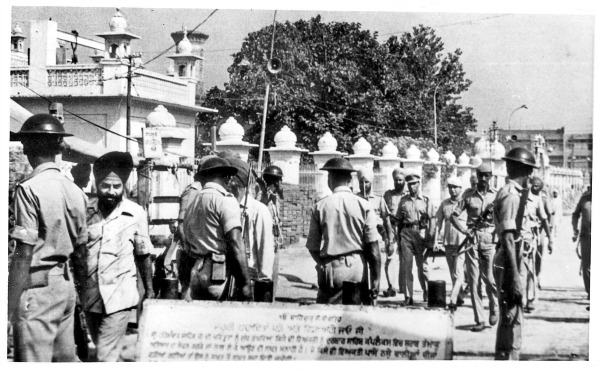

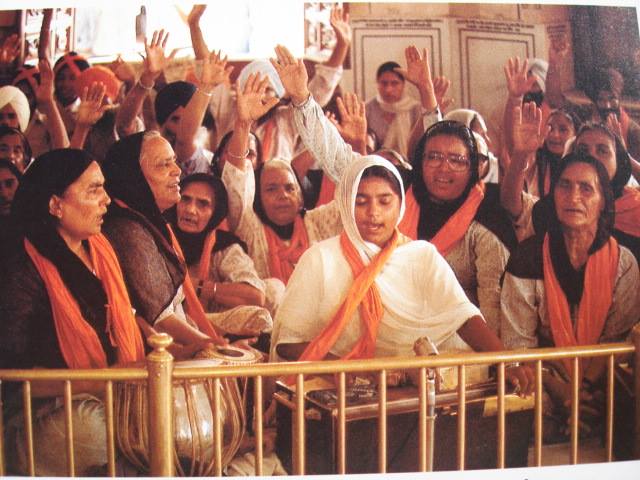

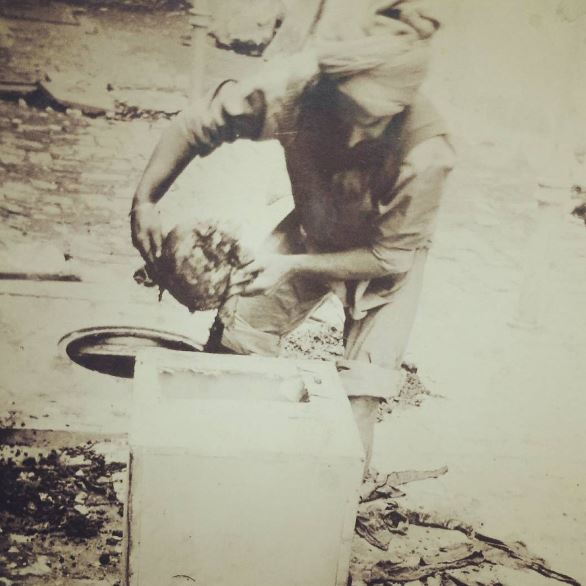
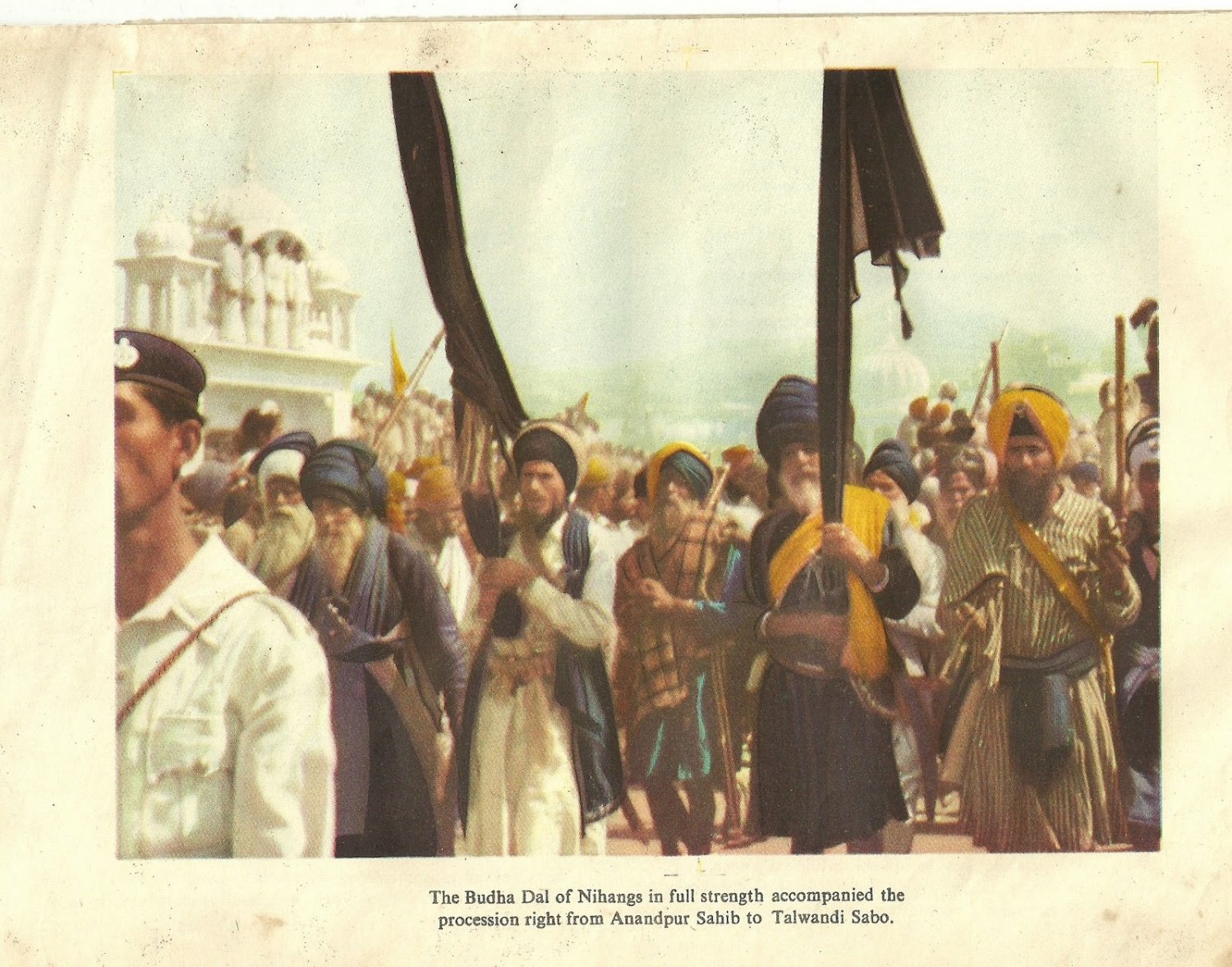
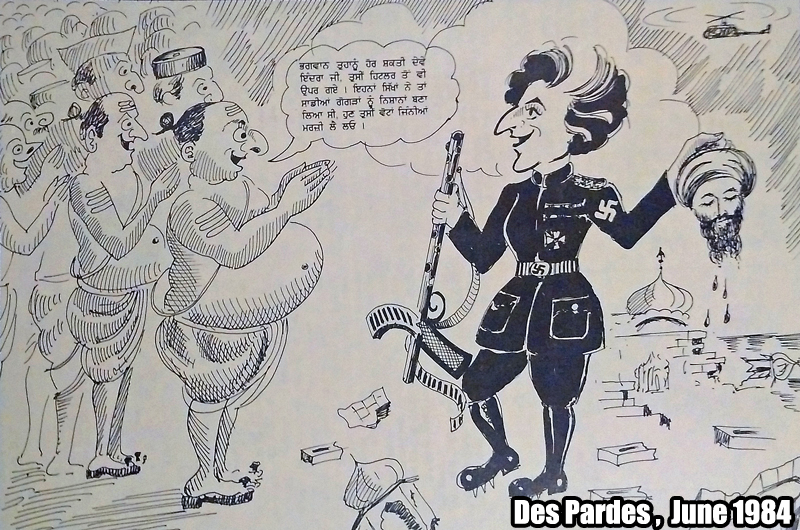
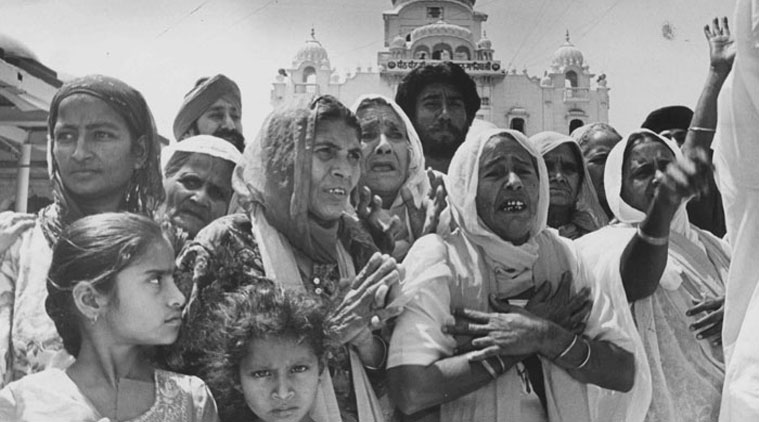
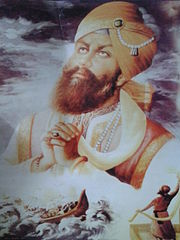
.jpg.51892b154af88fe76511d84a753ae516.jpg)
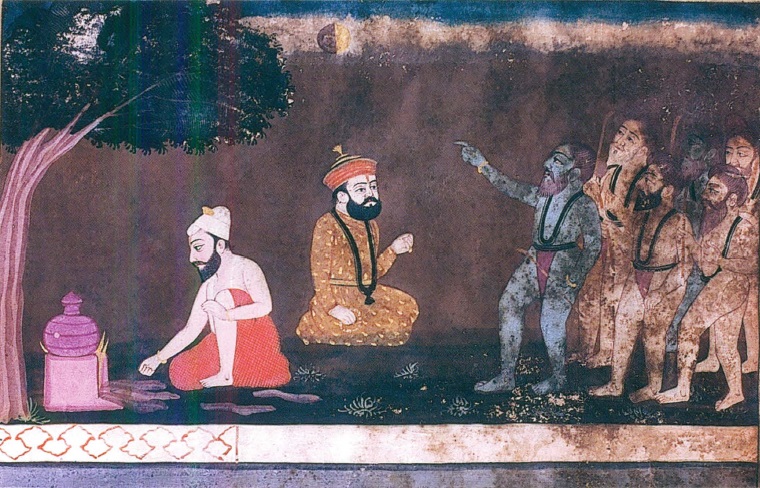

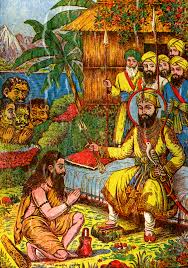
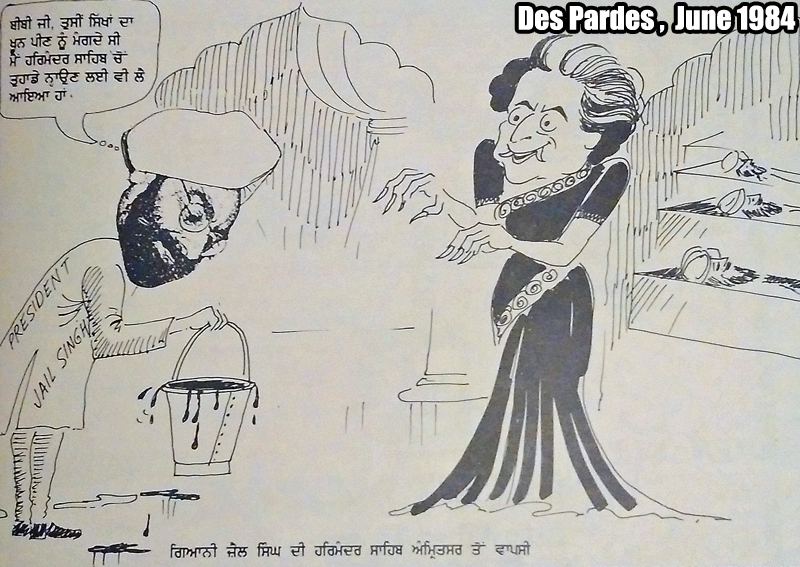
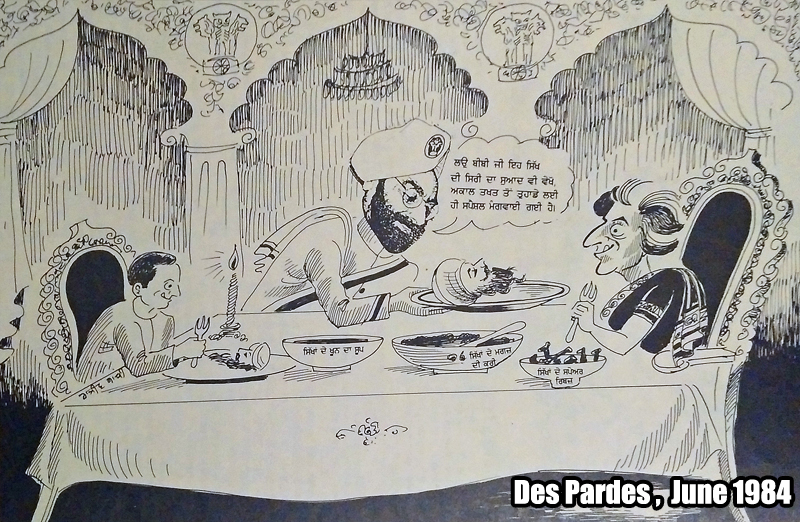
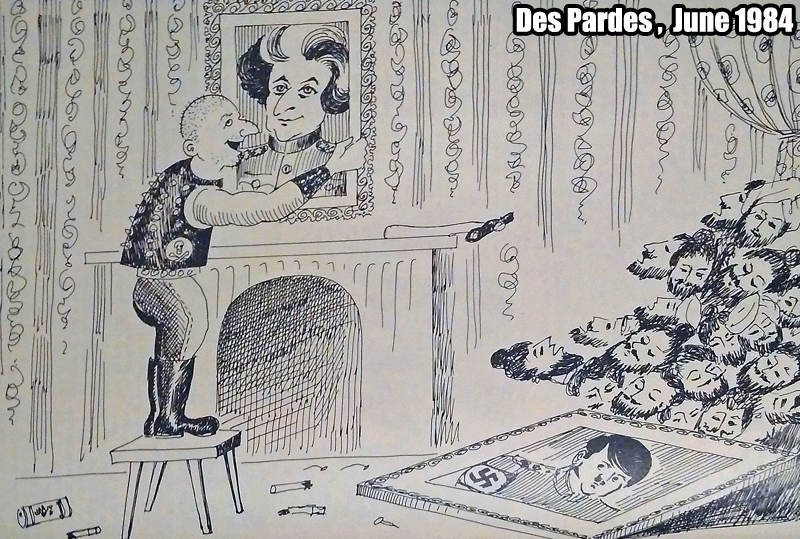
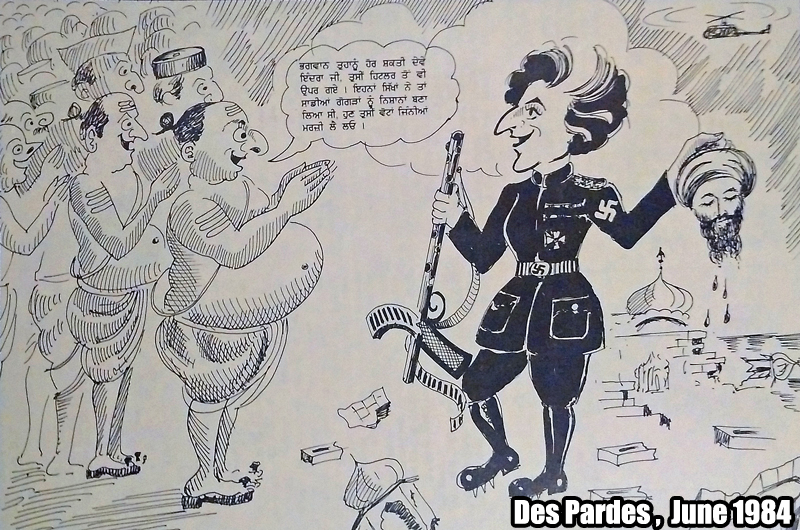
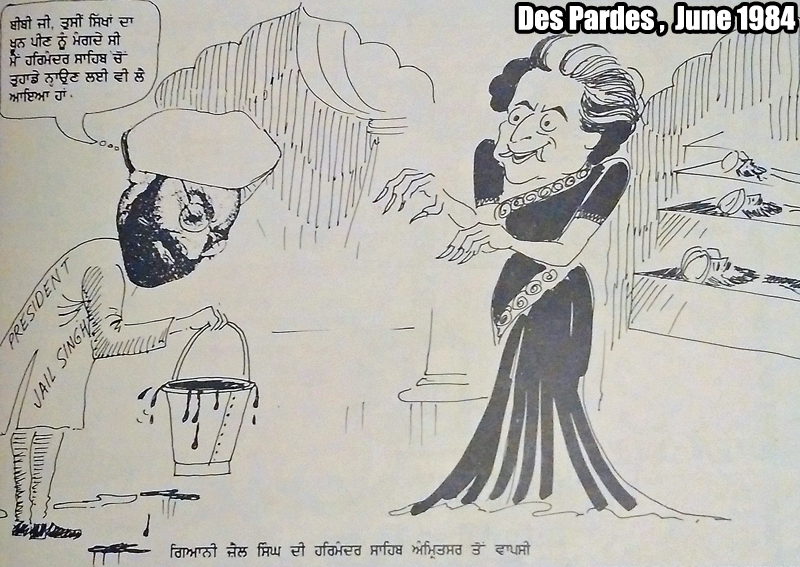
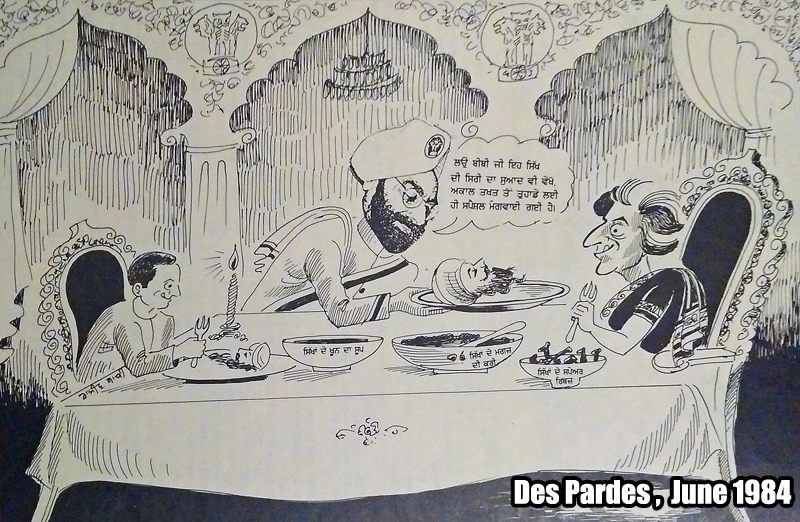
How did Balbir Bazighar gain influence?
in WHAT'S HAPPENING?
Posted
You, <banned word filter activated> Bob and horny Kamal are all one and the same.